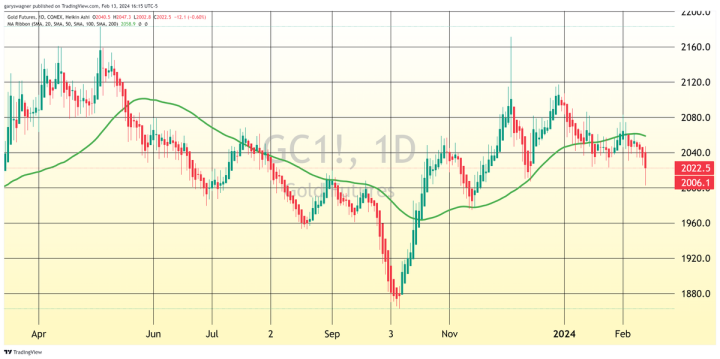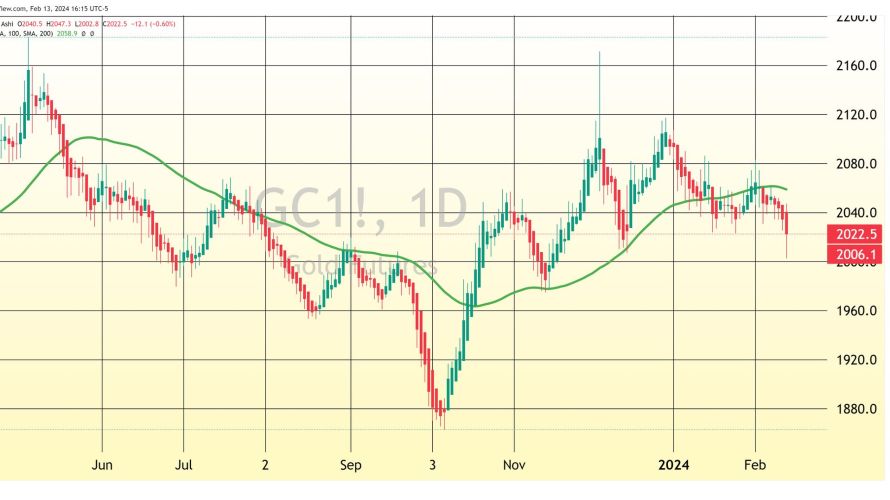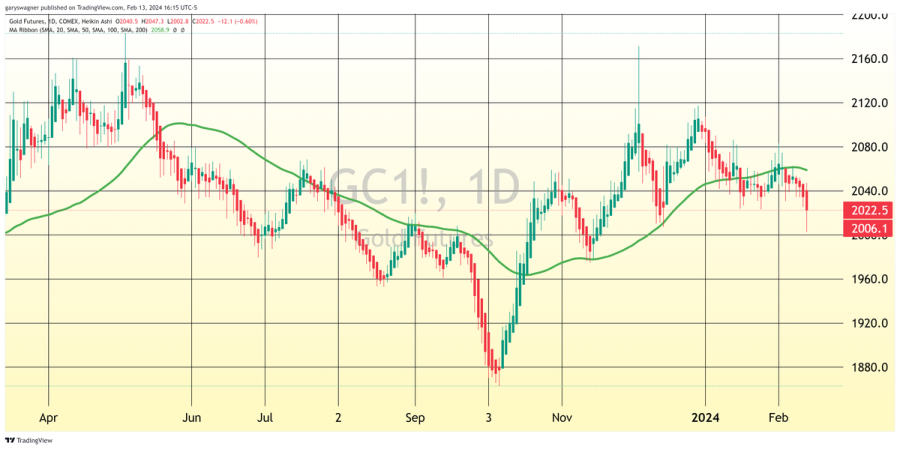
Gold declines sharply as higher-than-expected CPI leads to dollar strength

Gold declines sharply as higher-than-expected CPI leads to dollar strength teaser image
Today the U.S. Bureau of Labor Statistics released the consumer price index report for January.
“The Consumer Price Index for All Urban Consumers (CPI-U) increased 0.3 percent in January on a seasonally adjusted basis, after rising 0.2 percent in December, the U.S. Bureau of Labor Statistics reported today. Over the last 12 months, the all items index increased 3.1 percent before seasonal adjustment”.
The index for shelter increased by 0.6% in January, which contributed the largest spike in inflationary pressures, contributing approximately two-thirds of the monthly all items increase. Food was also troublesome, increasing 0.4% last month. The energy index fell by 0.9% over the month, largely due to a decline in gasoline costs.
The numbers revealed that inflationary pressures last month came in 1/10 of a point more than economists’ expectations. A higher-than-expected rise in inflation last month could easily change the timing of rate cuts by the Federal Reserve. More so, it raises a small, but real possibility that the Federal Reserve might raise rates before pivoting to rate cuts. However, for that to happen, inflation would have to come in hotter than expected in February.
Multiple Fed officials, including Chairman Powell have made it clear that they need to see more evidence that inflation is abating before making a final decision on the timing to initiate the Fed’s first rate cut. During his post-FOMC meeting press conference, Chairman Powell was asked if inflation has declined enough to initiate the first rate cut to which he answered, “We will need to see continuing evidence to build confidence that inflation is moving down sustainably toward our goal.”
Powell also remarked that a rate cut in March would be highly unlikely and today’s inflationary numbers reinforce that decision making the most likely first rate cut to possibly occur in May, but more likely in June. According to the CME’s FedWatch tool, there is only an 8.5% probability that the Federal Reserve will cut rates in March, and a 32.3% probability of a rate cut in May. That changes in June with a 52.7% probability that the Fed will have cut rates by ¼%, an 18.9% probability of ½% rate cut, and a 1.3% probability of a ¾% rate cut by the conclusion of the June FOMC meeting.
Following the release of today’s CPI report U.S. Treasury yields rose. The yield on 10-year treasury notes rose by 10 basis points to its current yield of 4.273%. The yield on 30-year bonds rose by seven basis points currently yielding 4.437%.
Higher yields on treasury debt moved the dollar substantially higher. The dollar opened at 104.156 and traded to a high of 105.001, and as of 4:45 PM ET, the dollar index is currently trading at 104.911 after factoring in today’s gain of 0.72%.
.png)
Gold sold off sharply based upon bearish market sentiment, resulting in traders actively selling, coupled with dollar strength. Gold futures basis the most active April contract declined by 1.64% taking gold $33.50 lower. While selling pressure resulted in a greater price decline than dollar strength, both were prominent factors in today’s $33 price decline.

Wishing you as always good trading
Kitco Media
Gary Wagner
David – http://markethive.com/david-ogden